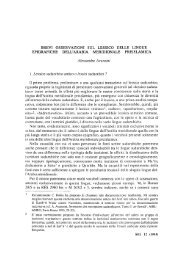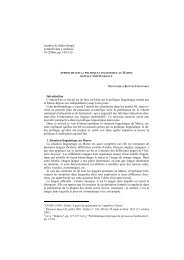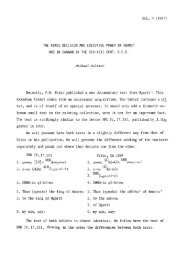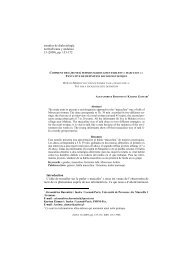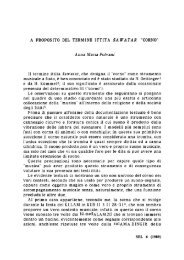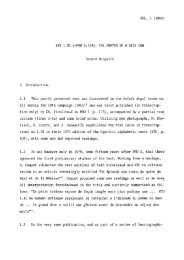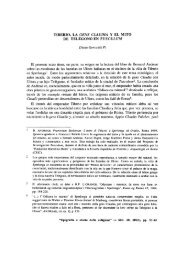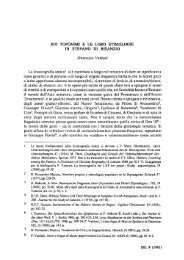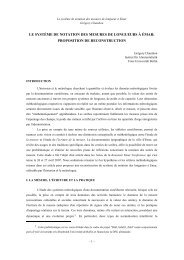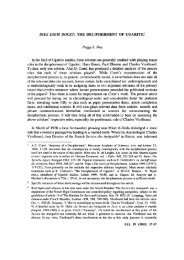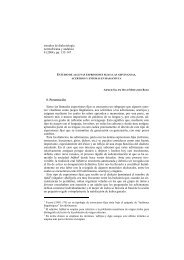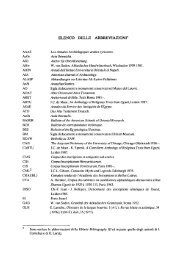ILI-MALKU THE T(Y Donna F. Freilich In Ugarit-Forschungen 20 ...
ILI-MALKU THE T(Y Donna F. Freilich In Ugarit-Forschungen 20 ...
ILI-MALKU THE T(Y Donna F. Freilich In Ugarit-Forschungen 20 ...
Create successful ePaper yourself
Turn your PDF publications into a flip-book with our unique Google optimized e-Paper software.
Ili-Malku the t ( y 25<br />
of offices? After all, the <strong>Ugarit</strong>ic titles prln and rb nqdm have no parallel in the<br />
Akkadian colophons, and rb khnm is paralleled just once 19 . Nor did any scribe<br />
working in the <strong>Ugarit</strong>ic language refer to himself as «servant of DN», a form of piety<br />
very popular with the scribes of Akkadian. We are left with the fact that both<br />
SUKKAL and t'y were offices attached to the king or queen, and that scribes filled<br />
both these offices. This is hardly evidence of their synonymity <strong>20</strong> .<br />
To maintain the identification of the scribe-f'y with the scribe-SUKKAL, and to<br />
define that official as a state bureaucrat, Van Soldt was forced to remain silent about<br />
the other <strong>Ugarit</strong>ic examples of t'y. Yet in these examples we see a religious official<br />
of high degree who appeared alongside the king during the latter's performance of his<br />
cultic obligations. <strong>In</strong> KTU 1.119, the king, mentioned in line 5, is directed to offer a<br />
series of sacrifices at the «house of the t'y » (lines 6-8). <strong>In</strong> KTU 1.90, after a series<br />
of broken lines, we read that the king «should give to the t'y (the aforementioned<br />
sacrifices)» (lines 21-22) 21 . The association of the king and the t'y recalls Ili-malku's<br />
position as Niqmaddu's t'y.<br />
If one dissociates Ili-malku's title of t'y from these other examples, one is forced to<br />
conclude that there were two different offices connected to the king, one secular, one<br />
religious, both held by someone called the t'y, a title having two completely different<br />
meanings.<br />
Against this, I consider the t'y to have been a religious official who answered<br />
directly to the king, and was associated with him in the performance of certain rites.<br />
The t'y was a man of high degree who could hold other religious offices as well, such<br />
as prln, rb khnm, and rb nqdm. <strong>In</strong> the case of Ili-malku he was also an accomplished<br />
scribe. Ili-malku ended his copy of KTU 1.6 with a postscript advertising his high<br />
offices, emblems of great achievement and honored status. His association with the<br />
teacher Attenu was a testament to his excellence as a scribe.<br />
At this point the treaty between Suppiluliuma and Niqmaddu in which t'y and<br />
SUKKAL are presumably parallel, must be reconsidered. Van Soldt's reading of the<br />
last sign in KTU 3.1:39 as f * is not supported by the photograph in CTA (r'late<br />
XLVIII) nor by the hand copy there (Figure 119). The remains of the left-hand wedge<br />
match that of a S much more closely than the small, tight, superimposed angle wedge<br />
'9 Sec note 5.<br />
Perhaps the SUKKAL at <strong>Ugarit</strong> was required, by virtue of the responsibilities attached to his<br />
office, to be fluent in Akkadian. For this reason, only scribes of Akkadian could have held the<br />
position.<br />
2' The verb I translate as «hc should give»,yn$/, has been variously translated by others as «to<br />
cease» (G. del Olmo Lete, Ug. _t



